This post may contain affiliate links. Please read my privacy policy.
This beef jerky recipe with Texas Pete's hot sauce tastes even better than it's super cool name! I came up with Pistol Pete from the old television show Brisco County Jr. I then realized that the character was only named Pete, not Pistol Pete.
So maybe it's from a guy we called Pistol Pete at a seafood restaurant I worked at when I was a teenager... Come to think of it, I'm not sure why we called him Pistol Pete... Anyway, it doesn't matter, I like the name. Let's check out Pistol Pete's Beef Jerky from Texas!
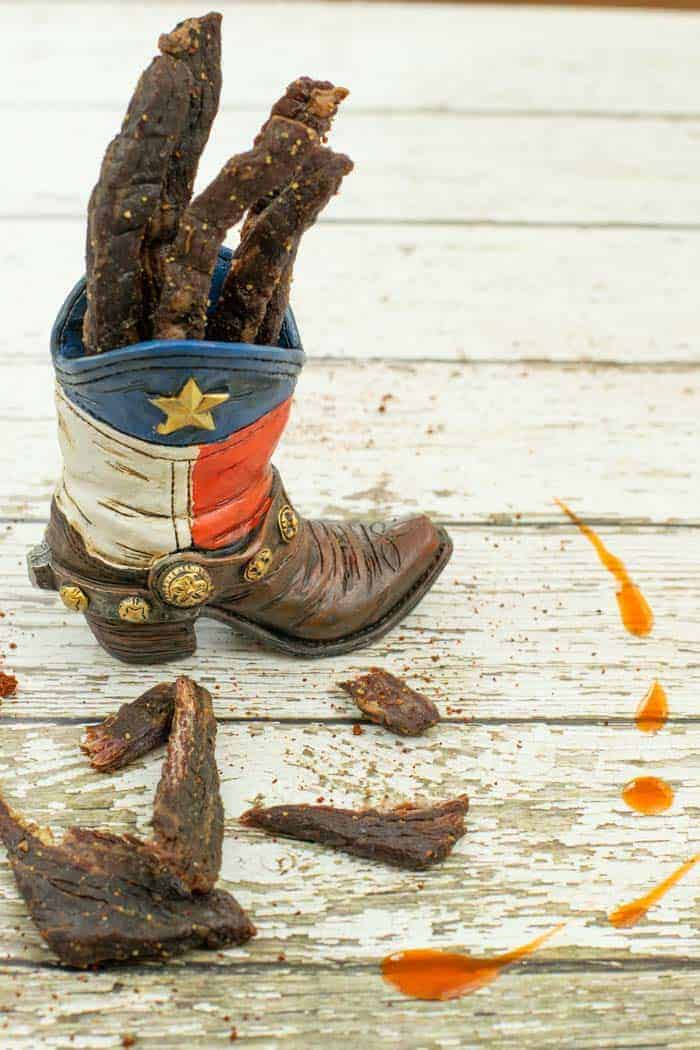
I'm a big fan of hot sauces and Texas Pete Hot Sauce really put the final touches on this jerky. Who doesn't like hot sauce?
Slicing Meat for Jerky
The first step to making beef jerky is choosing a lean cut of beef. I used beef Bottom round when making this beef jerky. You can find a complete list of the best cuts of meat for making beef jerky by clicking here!
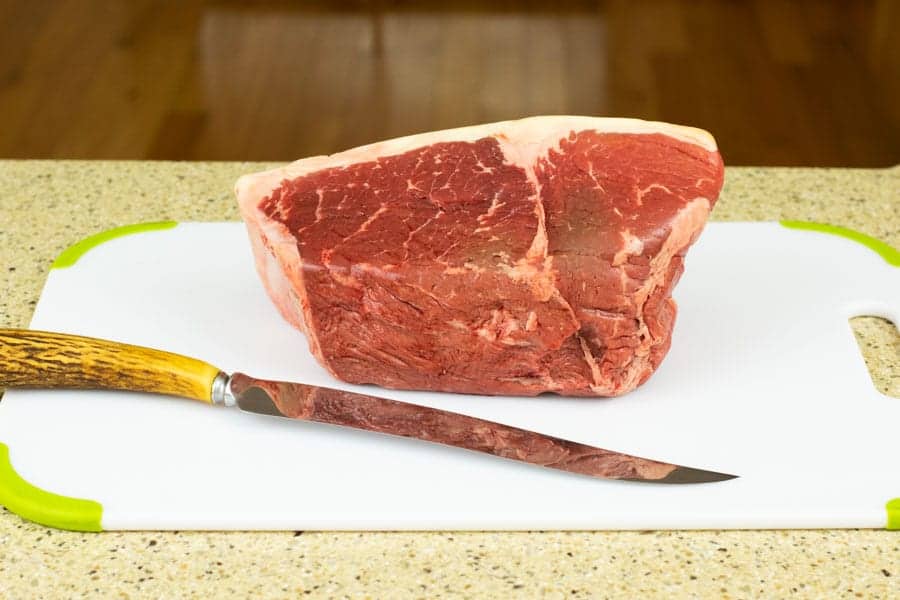
The second step of slicing meat for jerky is to trim the cut of meat of all visible fat.
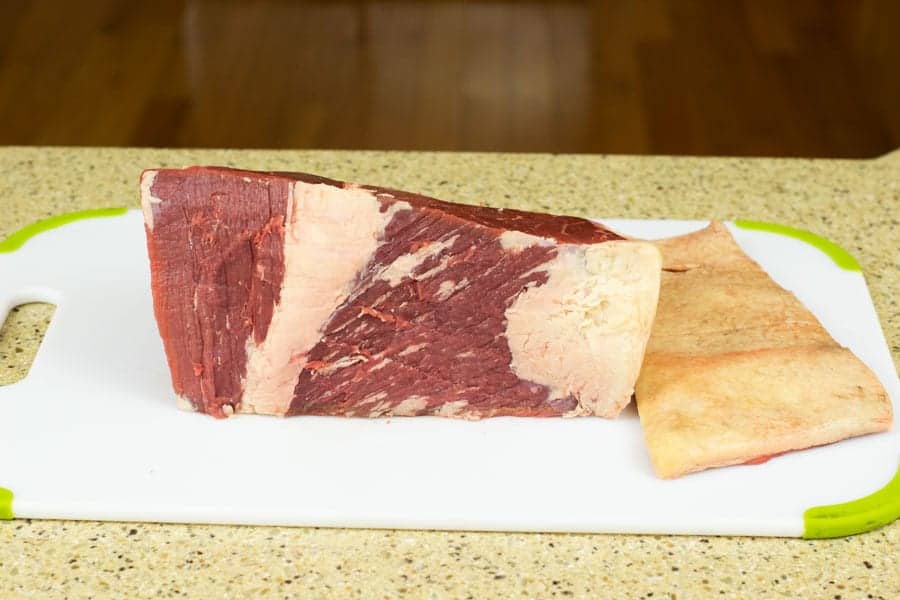
That white fat is called the fat cap. Just trim that off BEFORE you start slicing the meat. Fat spoils faster than meat, so the more you get off now, the longer your jerky will be shelf stable.
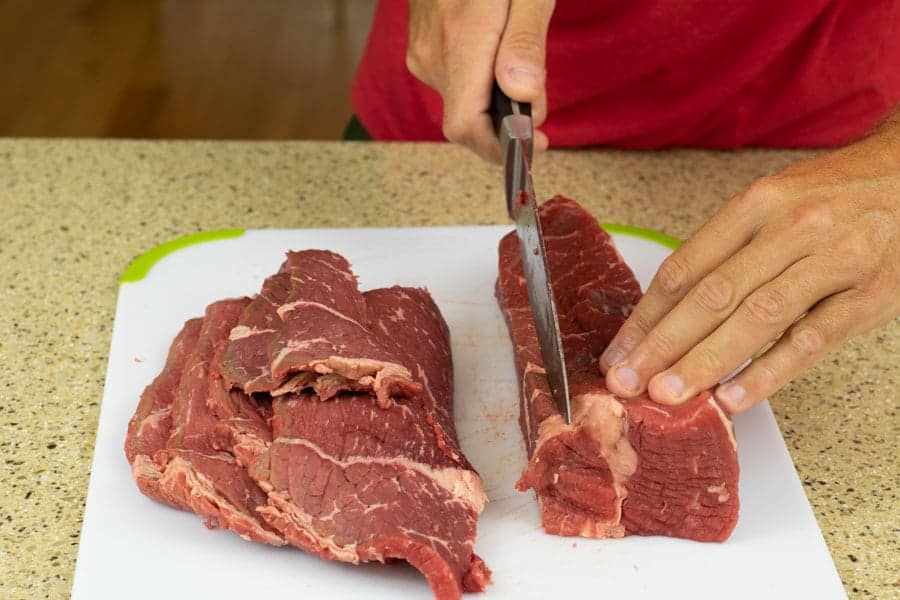
Here I used a sharp knife to slice even ¼" pieces from the roast. Putting the roast in the freezer for an hour or two will help firm up the meat and make it easier to slice.
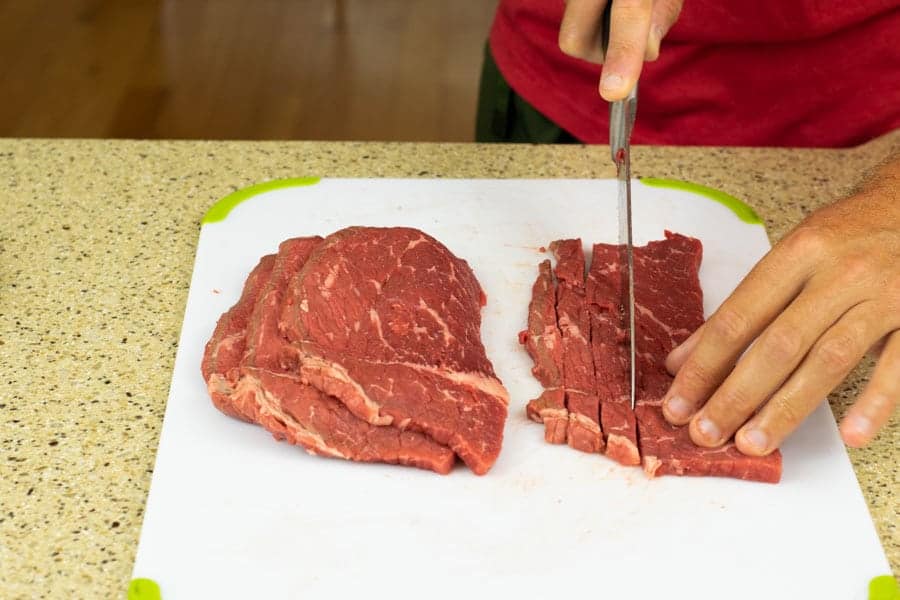
Then slice the meat in strips to your liking. I went with skinny strips with the grain for this jerky recipe. Slicing with the grain gives the jerky a little more chew. If you sliced it against the grain it would make the jerky a little more tender and easier to chew.
For more information on slicing meat for jerky, check out my slicing jerky page.
I didn’t use it on this recipe, but a jerky slicer is a FANTASTIC piece of equipment to help get even strips when slicing jerky.
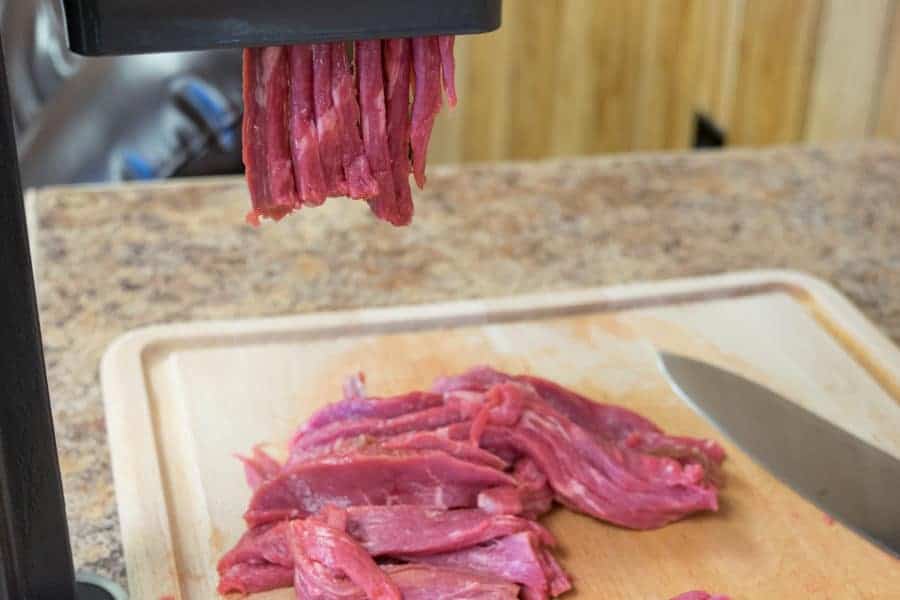
Making the Jerky Marinade
Pistol Pete's jerky is made with ingredients you probably already have in your pantry. The only thing you might need to buy is the Texas Pete's hot sauce. Feel free to substitute your favorite hot sauce if you already have it handy.
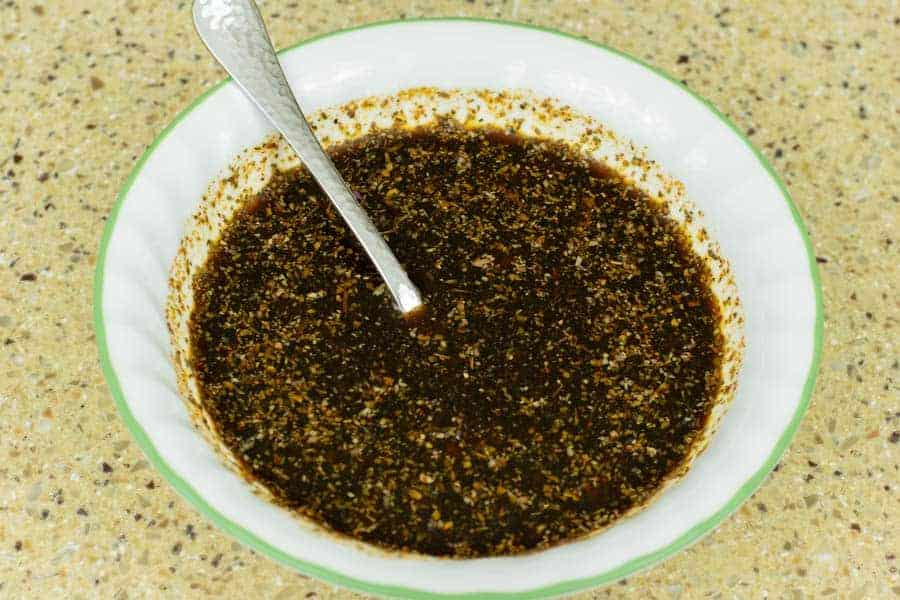
Add all the ingredients into a ziplock bag or bowl and mix really well.
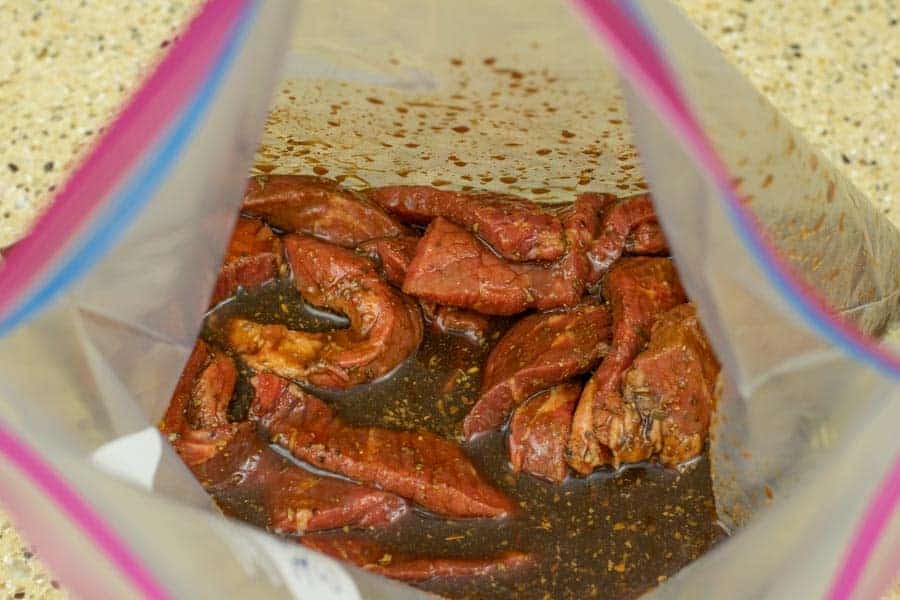
Add the beef strips to the marinade and mix it around well making sure that all the slices of meat are covered with marinade. More importantly marinate in the refrigerator for 6-24 hours, not on the kitchen counter. Food Safety first folks! Take the bag out of the fridge and mix the beef jerky strips around several times while marinating to further make sure the strips are covered evenly.
RELATED PAGE: ——-> DOZENS OF GREAT TASTING JERKY RECIPES – CLICK HERE <——-
Drying The Jerky
Once the meat has finished marinating, strain any excess marinade in a colander. We had this marinating for about 18 hours, the longer the marinade process the more intense flavor the jerky will have!
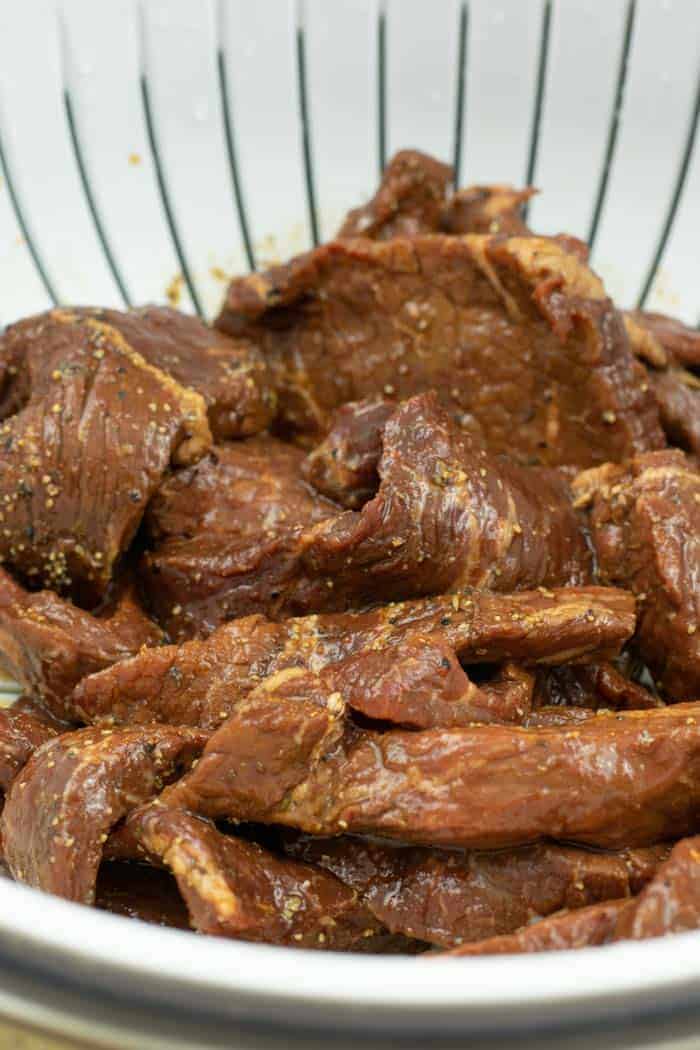
After the jerky is strained, lay out some paper towels on the kitchen counter to pat the strips dry of any further marinade that isn't soaked into the meat.
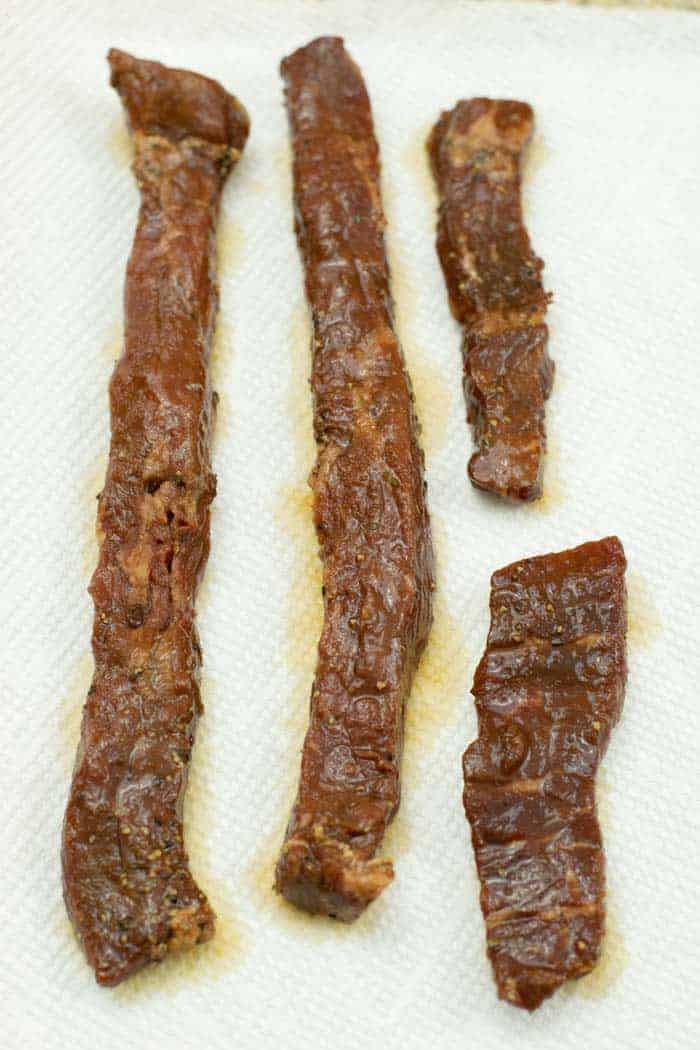
You can see the excess marinade on the strips above. That will slow the drying process down and can also leave a 'sticky' feel to the surface of the finished beef jerky. It's better to remove that by patting dry with the paper towels.
A Nesco Gardenmaster Dehydrator was used when making this beef jerky recipe, but you can use an oven or smoker if you prefer.
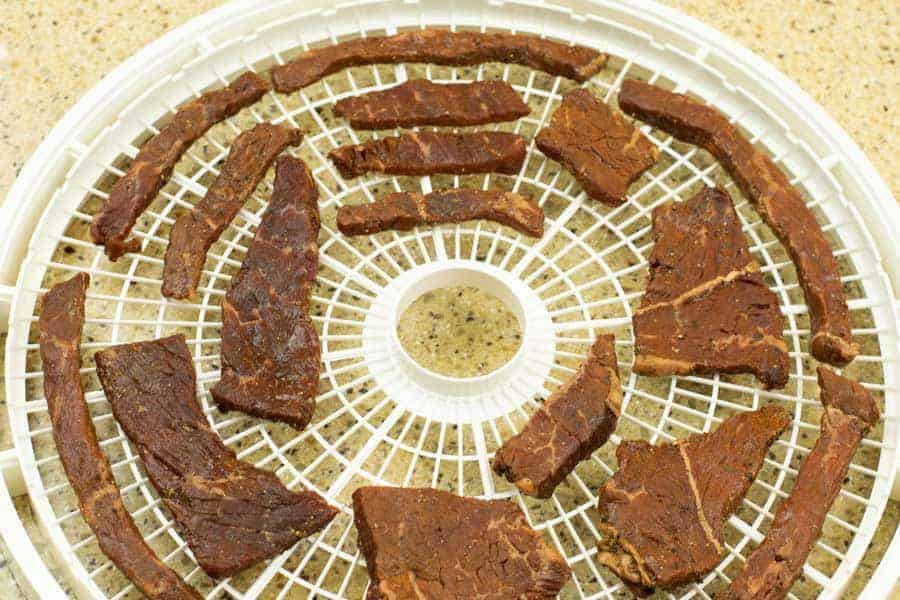
If using a dehydrator, lay the jerky strips on your dehydrator trays leaving space between the meat for air to circulate for effective drying.
Put the dehydrator setting to 160F or 165, whatever the highest setting is, and dehydrate for 2 hours. After 2 hours, you can turn it down to 145F to finish it off.
Testing For When The Jerky Is Finished
While drying the jerky, you want to start testing to see if it has finished at about the 3-4 hour mark. Take a piece of jerky out of the dehydrator, oven, or smoker and allow it to cool for 5 minutes to room temperature.
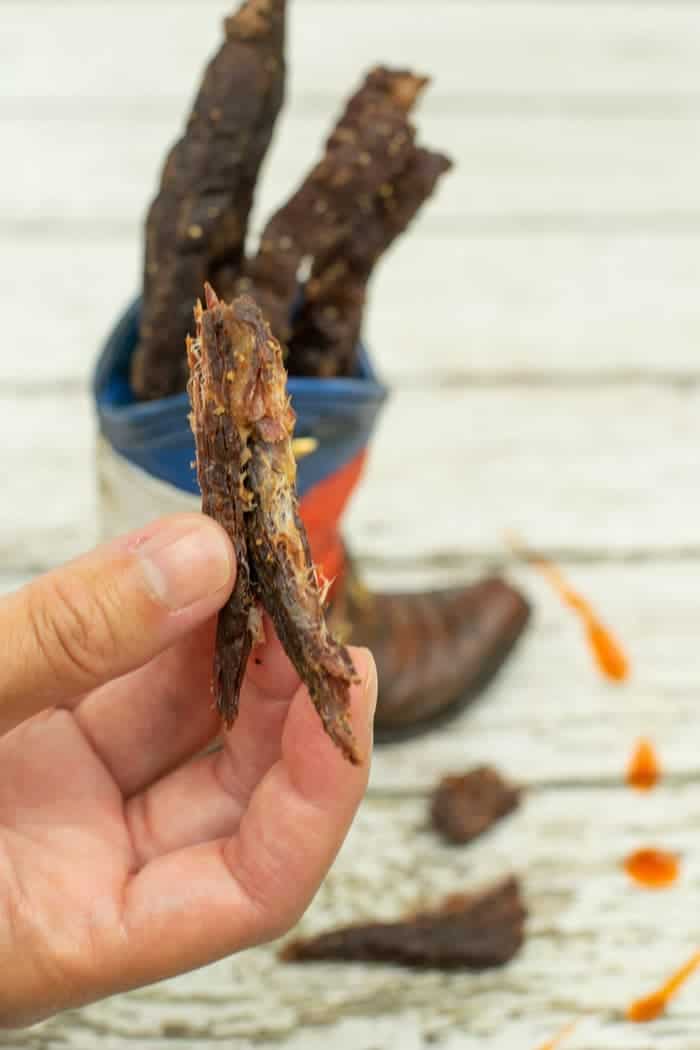
Bend the jerky in half; it should bend and crack but not break in half. You will also see white fibers in the meat. The fibers are really visible when a piece is ripped or bent in half.
This jerky took 6 hours to be finished. 90% of the jerky I make is finished within 4-6 hours when using a dehydrator or oven and 6-9 hours when using a smoker. If pre-heating the meat in the oven, drying time can be as little as 2.5 hours.
Storing Beef Jerky
To make the jerky last as long as possible, curing salt will really help along with keeping in air tight containers. I have put together a page on storing beef jerky and steps you can take to make your jerky have an extended shelf life.
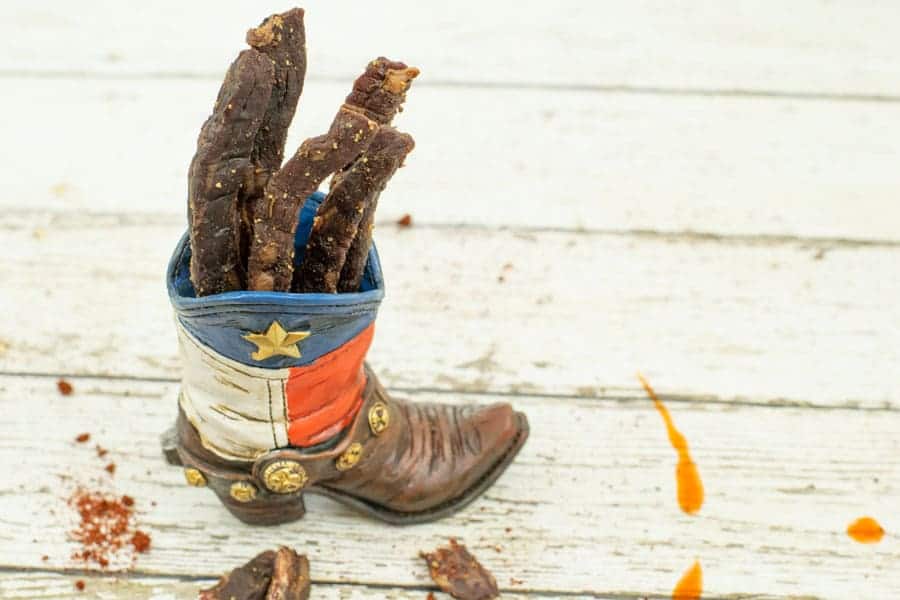
This was a great tasting jerky. It was a little salty with the soy sauce flavor coming through. I'm a BIG fan of soy sauce flavored jerky! The spice is not overpowering, Texas Pete has a great flavor without crazy spice. This will definitely be a crowd pleaser and you WILL have people asking you to make more.
Old Pro Tips:
- Add apple, hickory, or mesquite liquid smoke if you want a smoky flavor
- Substitute any hot sauce that you desire or have on hand
- Use Prague Powder #1 to increase the shelf life of the jerky and help kill any bacteria
- Store in vacuum seal bags for 6 month shelf life

Ingredients
Lean Meat
Marinade
- ⅔ cup soy sauce
- ⅓ cup worcestershire sauce
- 1 ½ tablespoon Texas Pete hot sauce
- 1 teaspoon kosher salt
- 1 teaspoon black pepper (course)
- 1 teaspoon garlic powder
- ½ teaspoon onion powder
- ½ teaspoon chili powder
- ½ teaspoon basil (fresh or dried flakes)
Optional
- ¼ teaspoon Curing Salt (Prague Powder #1)
- 1 teaspoon liquid smoke (hickory)
Equipment
Instructions
- Trim all visible fat from the beef and place in freezer for an hour or two to partially freeze.
- While the meat is in the freezer, combine marinade ingredients in a bowl or ziplock bag and mix well.
- Remove the meat from the freezer and slice ¼" strips against the grain for an easy chew. Cut with the grain for a more chewy jerky. Visit my page on slicing jerky for more information. You can also use a Weston Jerky Slicer when making this recipe.
- Add sliced beef to the mixture in a ziplock bag or bowl and marinate for 6-24 hours in the refrigerator.
- After the meat has finished marinating, remove from refrigerator and strain excess marinade in a colander and pat dry the beef strips with paper towels
- Dry with your favorite jerky making method. I used my Nesco Dehydrator and dried for 2 hours at 165F and 4 hours at 145F.
- The jerky is finished when it bends and cracks, but does not break in half.
Pro Tips
Old Pro Tips:
- Add apple, hickory, or mesquite liquid smoke if you want a smoky flavor
- Substitute any hot sauce that you desire or have on hand
- Use Prague Powder #1 to increase the shelf life of the jerky and help kill any bacteria
- Store in vacuum seal bags for 6 month shelf life
Nutrition





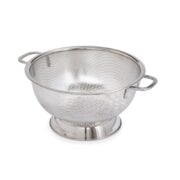
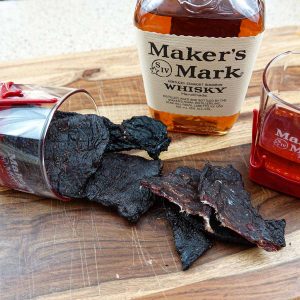
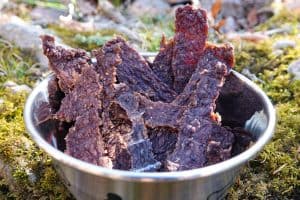
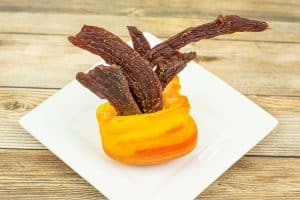
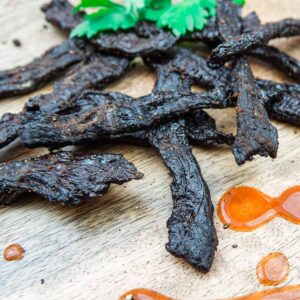
Pistol Pete says
God I hate this recipe, it was not made actually by pistol pete himself it was actually made from Will from Colorado. Don't be fooled, it's not the real Pistol Pete.
Will says
Ha. Thanks Pistol Pete for the spirited comment.
Bob Bailey says
Pistol Pete Maravich: Peter Press Maravich (Serbian Cyrillic: Петар Маравић; June 22, 1947 – January 5, 1988), known by his nickname Pistol Pete, was an American professional basketball player. Maravich was born in Aliquippa, Pennsylvania, part of the Pittsburgh metropolitan area, and raised in the Carolinas.[1] Maravich starred in college with the LSU Tigers while playing for his father, head coach Press Maravich. He is the all-time leading NCAA Division I scorer with 3,667 points scored and an average of 44.2 points per game.[2] All of his accomplishments were achieved before the adoption of the three-point line and shot clock, and despite being unable to play varsity as a freshman under then-NCAA rules.[3] He played for three National Basketball Association (NBA) teams until injuries forced his retirement in 1980 following a 10-year professional career.
One of the youngest players ever inducted into the Naismith Memorial Basketball Hall of Fame, Maravich was considered to be one of the greatest creative offensive talents ever and one of the best ball handlers of all time.[4][5] He died suddenly at age 40 during a pick-up game in 1988 as a consequence of an undetected heart defect.[6]